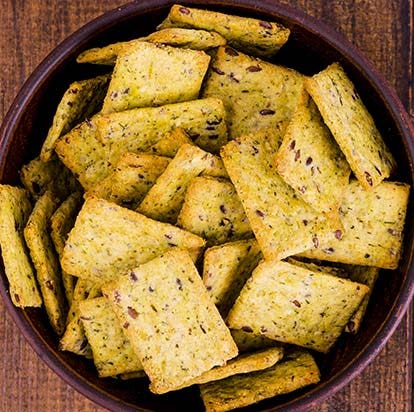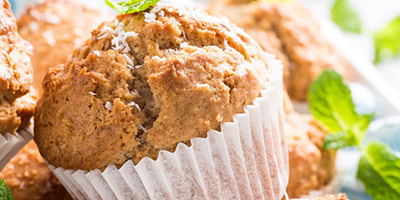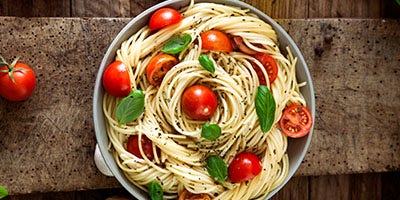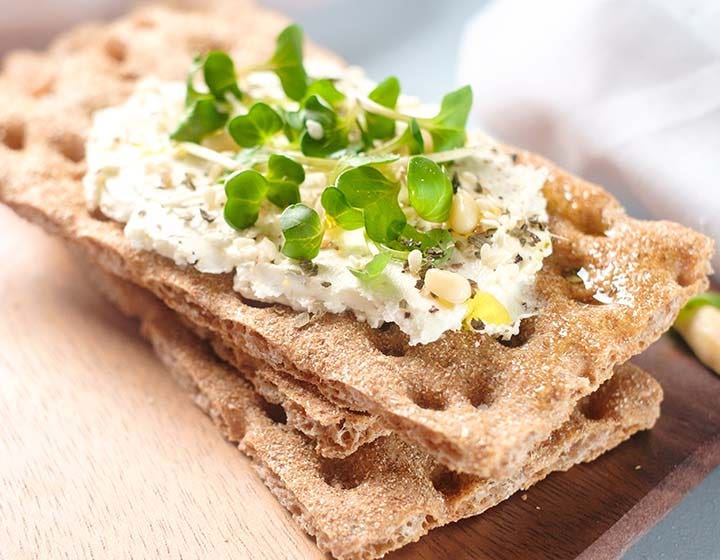
Fibres

Consumer demand for fibre continues steady rise
Fibre is crucial to our health and well-being, and regular consumption can lead to many desirable health benefits. These health benefits are well-established and it is difficult to find any information about better nutrition that does not praise the importance of consuming more fibre. Today’s consumers are demanding more fibre in everything, from breakfast cereals and snacks to side dishes and beverages.
Top categories include bakery and cereals, as both incorporate fibre from grains as well as ingredient sources, but surprisingly, growth is strongest in subcategories not typically associated with fibre, such as carbonates, deli substitutes, chocolate and instant noodles.1
The takeaway for food and beverage manufacturers is that there is no shortage of opportunities to grow their businesses by creating products with increased fibre that taste great and contribute to the benefits consumers demand.
Regular fibre consumption can contribute to a wide variety of health benefits consumers seek
Dependent on the type and amount consumed on a regular basis, dietary fibre not only aids digestion but can also offer a variety of other benefits, including:
- Improved Bowel function (laxation)
- Lower LDL/cholesterol which can reduce the risk of heart disease
- Health claim reducing risk of coronary disease
- Lower blood glucose/insulin
- Bone health/calcium absorption for increased mineral absorption in the intestinal tract
- Lower calorie intake due to increased satiety
- FDA recognized
Soluble fibres
Increase the level of good bacteria in the gut and support digestive health with some of the most effective prebiotics and fibres on the market today. Our selection of soluble fibres includes products that can help reduce sugar in your formulations and promote digestive function while improving texture.
VERSAFIBE™ 285 Soluble Corn Fiber
Reduce sugar and deliver fibre — while building back sugar’s bulk and texture

Insoluble fibres*
Our selection of insoluble fibres, which includes low-FODMAP options, can help you differentiate your products with higher fibre content and bring digestive health benefits to baked goods, snacks, pasta and more. Generate greater appeal with the just-right taste and texture consumers prefer with these ingredients.

HI-MAIZE® 260 resistant starch*
Replace refined or whole wheat flour on a one-for-one basis in a wide range of recipes
Enrich your products with Ingredion’s proven fibre solutions
Create fibre-rich products that consumers will crave. We have what you need to bring your vision to life through a broad plant-based portfolio of in-demand ingredients and solutions for improved nutrition, health and wellness applications. Our formulation, sensory and nutrition science experts have the experience to help you design and get your fibre-enhanced products to market faster. Let our dedicated team be your guide for claims substantiation, label requirements and identifying a fibre solution that’s right for your product.
Webinar: Fibre's role in nutrition, health and wellness snacking
Formulating snacks with a fibre focus can have a positive impact on your brand growth and appeal. Learn more consumer insights and healthy snacking trends from Ingredion experts.


Webinar: Elevating healthier products through texture innovation
Join Ingredion as our experts discuss consumer insights related to texture and its role in the development of healthier food and beverage options. We'll also explore practical examples of how our technical and sensory expertise can help you formulate products with texture characteristics that provide a superior eating experience for consumers.
Webinar: Innovative Ingredients: Empowering Metabolic Health
Food and beverage companies must stay ahead of shifting consumer priorities with formulations that support healthy weight management, optimal blood glucose levels and much more. Join us for our free webinar and hear Ingredion experts discuss:
- The latest health and wellness trends
- Evolving consumer behaviors and industry growth strategies
- Practical examples of product reformulation to meet consumer lifestyle goals

Related resources

Digestive health
Create appeal and promote consumer well-being with solutions designed to maintain and improve digestive and gut health.

Prebiotics for infant nutrition
Support infant digestive health with high-quality ingredients.

Formulating for nutrition
Give consumers more of what they want and less of what they don’t. Our solutions for nutrition can replace less-desirable ingredients with more nutritious alternatives — adding fibre, enhancing protein or reducing sugar in your application.
Frequently asked questions:
What is dietary fibre made of?
Dietary fibre is made up of carbohydrate polymers with three or more monomeric units (MU), which are neither digested nor absorbed in the human intestine. Some non-carbohydrates such as lignin and substances which are present in cell walls linked to polysaccharides, may also be considered dietary fibres according to different regulatory authorities.
Where does dietary fibre come from?
Dietary fibres may come from:
- Naturally occurring sources: “intrinsic and intact” carbohydrates and lignin
- Isolated or synthetic carbohydrates that have physiological effects that are beneficial to human health
What are the food sources of dietary fibres?
Both soluble and insoluble fibres are naturally occurring in food sources such as fruits, vegetables, legumes, tubers and cereals. Resistant starch can only be found in starchy foods such as cereals, tubers and green bananas. Pectins are more naturally occurring in fruits and vegetables, and β-glucans and arabinoxylans are present in cereals.1

Learn more about texturizers
Whether you’re formulating for a specific characteristic or simply interested in learning more about an ingredient, our Texturizer Solutions page has all the information you need.
Let’s make your goals a reality
Collaborate with us today to tap into our deep nutrition and sensory science expertise, formulation experience, broad portfolio of in-demand ingredients, market research, consumer insights and more.
1Makki, Kassem, et al. "The impact of dietary fiber on gut microbiota in host health and disease." Cell Host & Microbe 23.6 (2018): 705-715.
*Meets FDA requirements for dietary fibers
The information described above is offered solely for your consideration, investigation and independent verification. It is up to you to decide whether and how to use this information. Ingredion Incorporated and the Ingredion group of companies make no warranty about the accuracy or completeness of the information contained above or the suitability of any of their products for your specific intended use. Furthermore, all express or implied warranties of noninfringement, merchantability or fitness for a particular purpose are hereby disclaimed. Ingredion Incorporated and the Ingredion group of companies assume no responsibility for any liability or damages arising out of or relating to the foregoing.